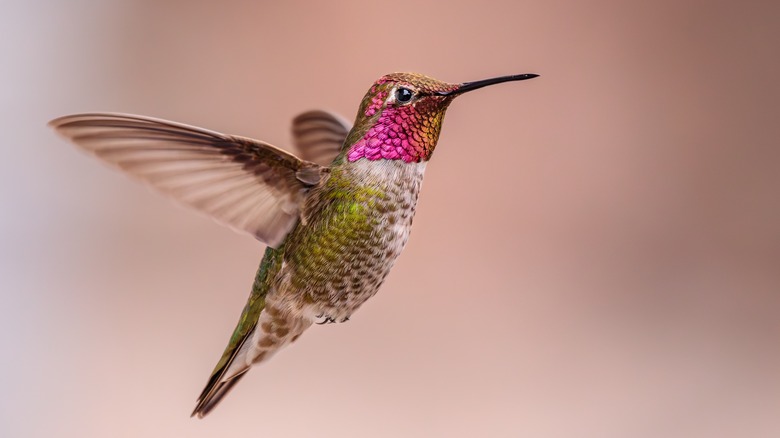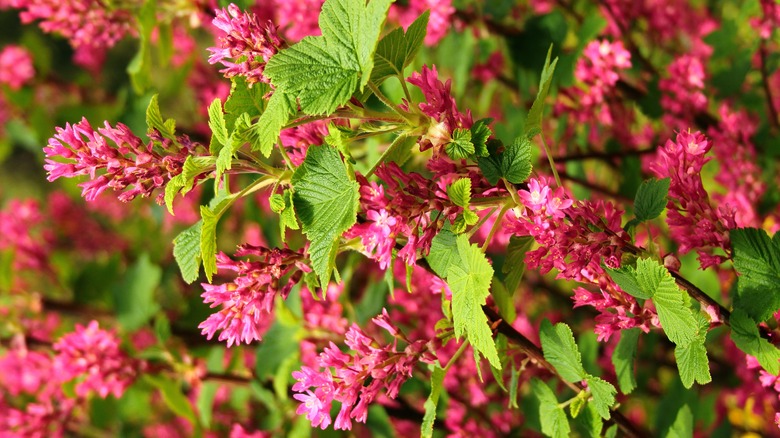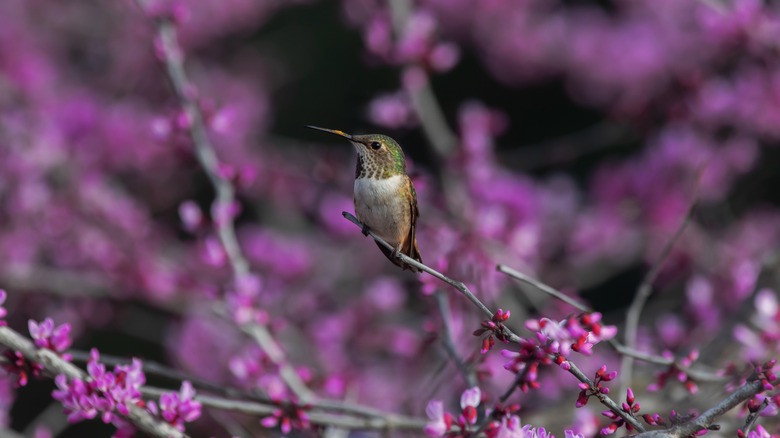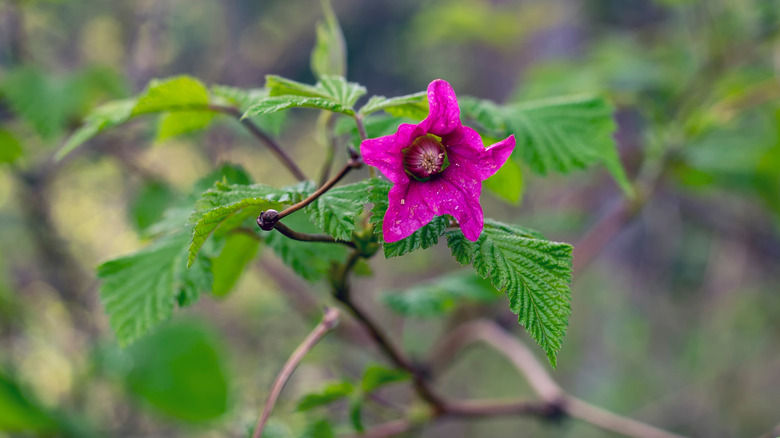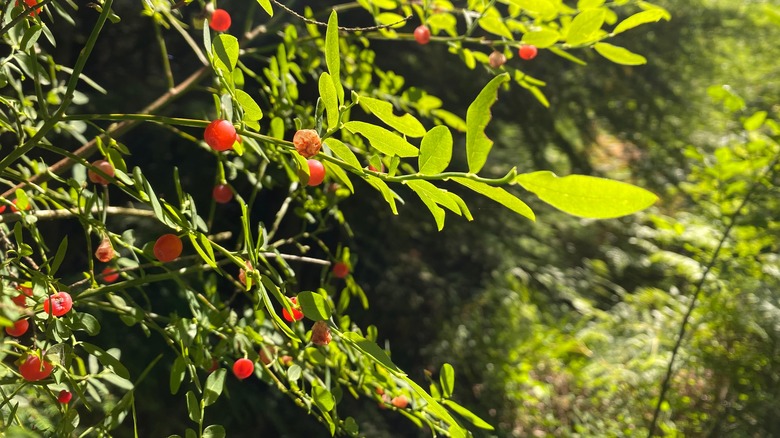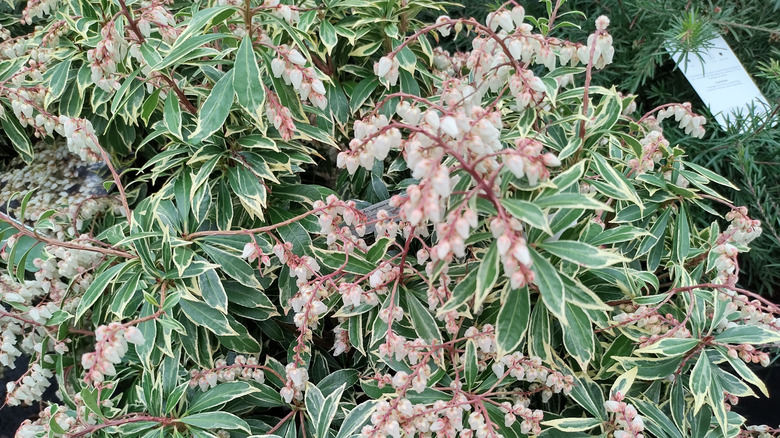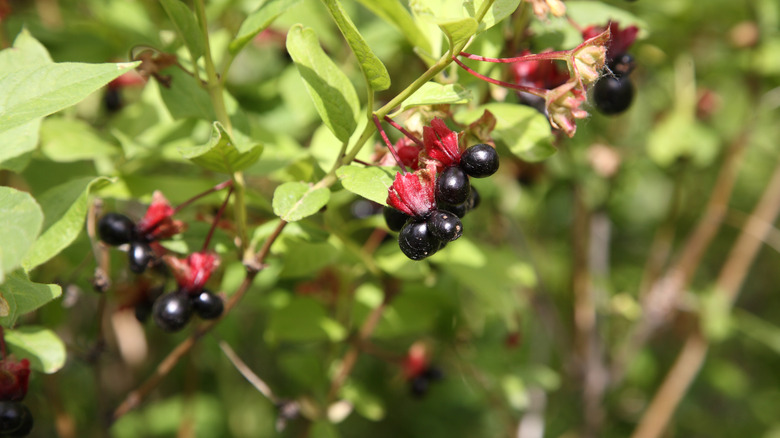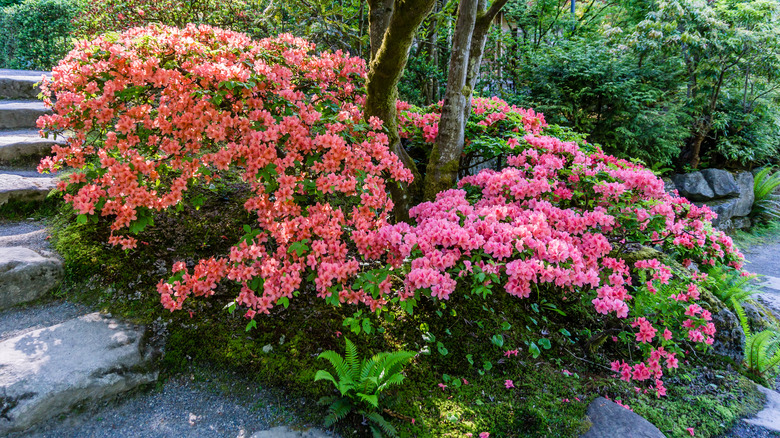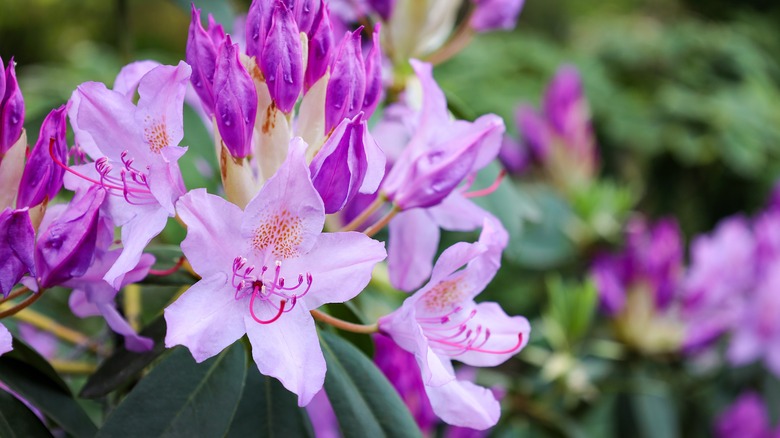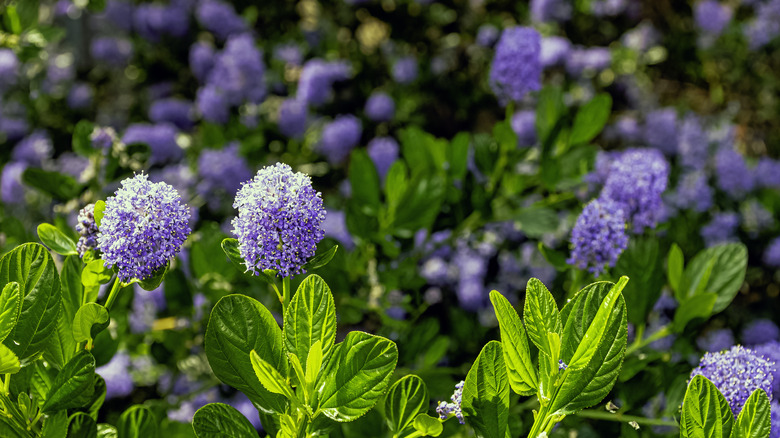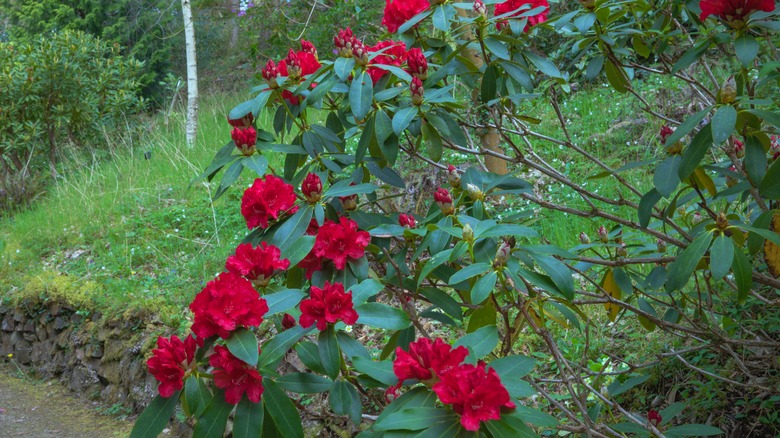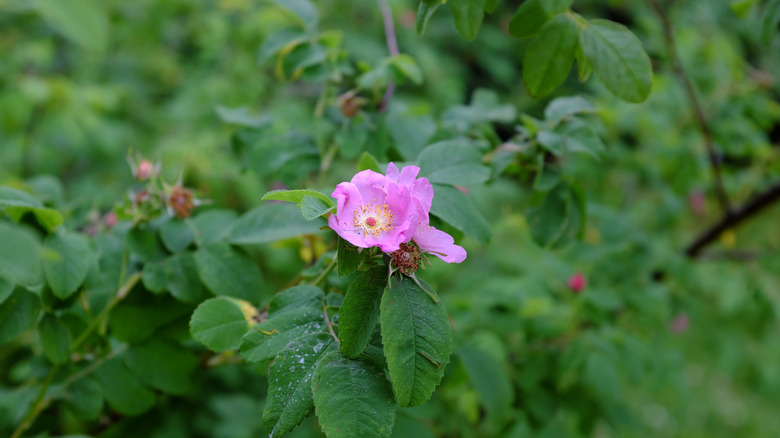Grow These Bushes In The Pacific Northwest To Attract Hummingbirds
Lucky residents of the Pacific Northwest have the opportunity to view several different types of colorful hummingbirds as they migrate into the area each April and stick around throughout the summer months. This includes Anna's (Calypte anna) and rufous hummingbirds (Selasphorus rufus) along with Calliope (Selasphorus calliope) and Black-chinned hummingbirds (Archilochus alexandri) more occasionally. Hoping to get a glimpse of as many types as possible, gardeners often look for plants that will draw these little hovering beauties to their yards, including many different types of bushes.
Which shrubs draw the most hummingbirds? Concentrating on those that offer an abundance of blooms will provide the nectar hummingbirds need for fuel. Interestingly, hummingbirds don't smell the flowers but can see them very well, and flowers in many colors get their attention, so bright Rhododendron and Rubus species are highly attractive. Flowering bushes also draw insects that are essential to a hummingbird's diet. Both native and non-native shrubbery can serve this purpose, and we've got 11 different types to consider planting if you're aiming to attract hummingbirds to your property.
Red-flowering currant
A relative of the gooseberry, red-flowering currant (Ribes sanguineum) grows all along the Pacific coast from California to British Columbia. This native ornamental deciduous shrub grows to about 3 to 9 feet tall. This bushy plant thrives in shady locations in well-draining soil and is often at home in Douglas Fir forests. The multitude of flowers it produces in early springtime usually vary in hue from pale to vivid pink and readily attract hummingbirds with their abundant nectar.
Western redbud
While you might think of the Western redbud (Cercis occidentalis) as a small tree, it can also be grown as a landscaping shrub. It requires pruning each spring after the blooms fade to train the branches and keep it at a manageable height. The Western redbud, alternately called California redbud, grows best in sunny to partly shaded areas with soil that drains well. Since you can attract many birds to your yard with a beautiful redbud, including hummingbirds, this is a great flowering shrub to consider with that goal in mind.
Salmonberry
Salmonberry (Rubus spectabilis), a bush endemic to the Pacific Northwest, is a relative of the rose. If you look closely at the centers of the flowers this bush produces, you'll see many rose-like stamens surrounded by five petals ranging in color from pink to magenta. Timing is everything for these blooms since they often go hand in hand with springtime rufous hummingbird migration as they move back into the area; by late spring and summer, orange, yellow, or red fruits that look like raspberries replace those blooms.
Red huckleberry
Red Huckleberry (Vaccinium parvifolium) is another bushy plant that's native to the Pacific coast of the United States. This shrub can get fairly tall, growing up to 13 feet in height, and tends to thrive when it has rotting wood near the base to nurture it. It puts on light green to yellow or pink flowers shaped like bells, perfect for attracting hummingbirds late in the springtime through the early summer months, and yields red berries thereafter. This one will grow everywhere, from sunny to shady areas, and it's known to thrive among azaleas and rhododendrons.
'Flaming Silver' Pieris
Another landscape shrub to consider for attracting hummingbirds is 'Flaming Silver' Pieris (Pieris japonica 'Flaming Silver'). This bush has attractive variegated foliage and leaves that grow in with a vivid red hue and fade as they mature. At the same time the red leaves appear, 'Flaming Silver' Pieris also puts on white flowers that offer nectar to eager hummers. Plant these bushes, which grow to about 5 feet tall over a decade, in partial shade or sunny areas. They also like well-draining, acidic soil that's on the wet side.
Twinberry honeysuckle
Twinberry honeysuckle (Lonicera involucrata) displays little tube-shaped yellow flowers each June and July. These small blooms are perfect for attracting hummingbirds, and they grow in pairs, hence "twin" in the name. When they fall away, two black berries take their place. While some animals do eat the berries, be warned that they are toxic. In gardens, twinberry honeysuckles are grown as ornamental bushes in sunny to partly shady spots and do their best in soil that drains thoroughly but remains somewhat wet.
Azaleas
There are many different varieties of azaleas–all of which are part of the rhododendron genus–sold in nurseries around the Pacific Northwest. This includes Azalea 'Arneson Gem' (Rhododendron 'Arneson Gem') with orange-hued flowers and Azalea 'Girard's Fuchsia' (Rhododendron 'Girard's Fuchsia') with vivid pink blooms along with others. When planted in sunny areas, these shrubs are known for putting on a proliferation of flowers each spring that are frequented by hummingbirds. One caution is that azaleas can be toxic to pets, so planting them in areas where you can keep an eye on your furry friends is preferable.
Western rhododendron
The Western rhododendron (Rhododendron macrophyllum), also known as Pacific rhododendron, is Washington's state flower and is sure to attract hummingbirds. This native evergreen shrub puts on clusters of flowers that can hold as many as 20 blooms, in fact. Colors can range from light pink to pinkish purple and sometimes white. They can be quite striking, growing against a background of deep green elongated leaves. If you want to try growing this showy bush as part of your hummingbird garden, plan to plant it in a sunny spot or a partially shaded area.
Blue blossom
When considering evergreen shrubs to draw hummingbirds to your yard, don't forget about blue blossom (Ceanothus thyrsiflorus). Every May and June, you can expect an explosion of spiky, deep blue groups of flowers to take over this bush. Their bright hue is a pleasant contrast to its bright green foliage. In addition to a landscaping shrub, blue blossom can be planted in rows to make up hedges. Blue blossom will grow from 4 to 12 feet tall and can be pruned to keep it more shrub-like rather than letting it grow into a small tree.
'Jean Marie De Montague' rhododendron
If you're a big fan of shrubs with red blooms–rose bushes, for example–this variety of rhododendron (Rhododendron 'Jean Marie De Montague') is certainly one to consider. 'Jean Marie De Montague' is one of many evergreen shrubs that will attract hummingbirds when it blooms, and it will put on a flowery show for you, even when it's young. A partly sunny spot with damp soil and shelter from windy conditions is perfect for this blooming bush that grows from 5 to 7 feet wide and about as tall.
Clustered rose
Clustered rose (Rosa pisocarpa) is also known as clustered wild rose, swamp rose, and peafruit rose. The latter name references the small size of the fruit that forms after the bush produces groups of flowers holding between two and 10 blooms. Those dark pink blossoms are also small, but the clusters indeed lure hummingbirds to a garden where they're planted. This thicket-forming shrub can withstand wetter ground than some others native to the Pacific Northwest, but it likes spots that are at least partly sunny and will tolerate full sun.
